[ad_1]
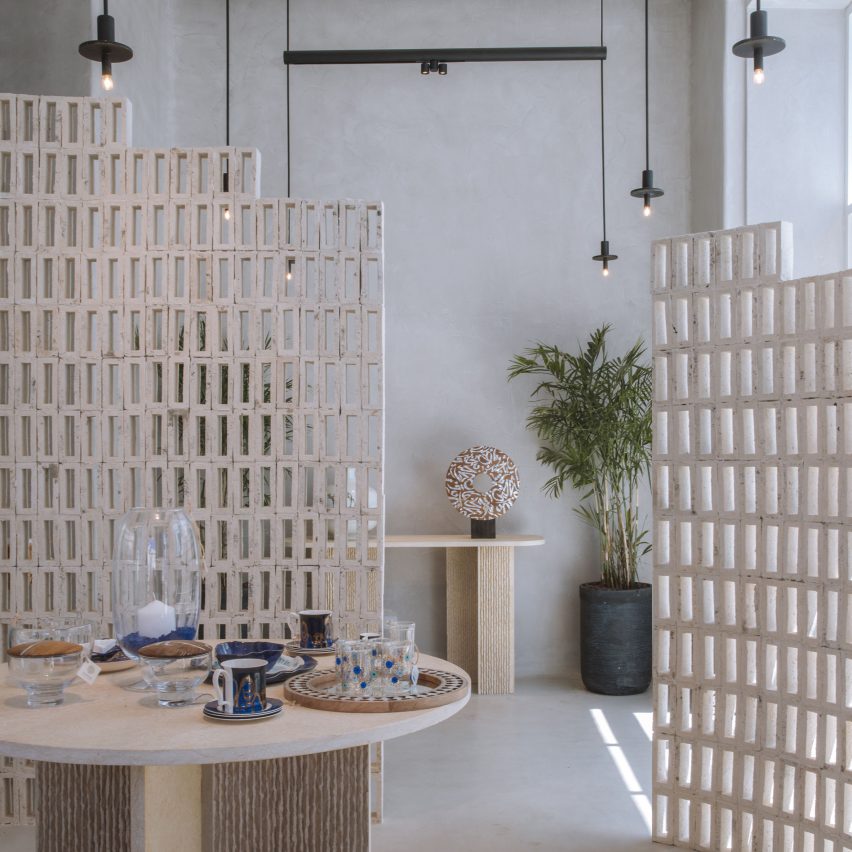
Crushed shells were used to form the bio-brick partitions at this store for a decor brand in Aqaba, Jordan, by architecture studio FADAA.
Designed by the Jordanian studio for Decoration One, the D/O Aqaba retail space is a flexible showcase for the local brand’s craft-focused homeware and ornaments.
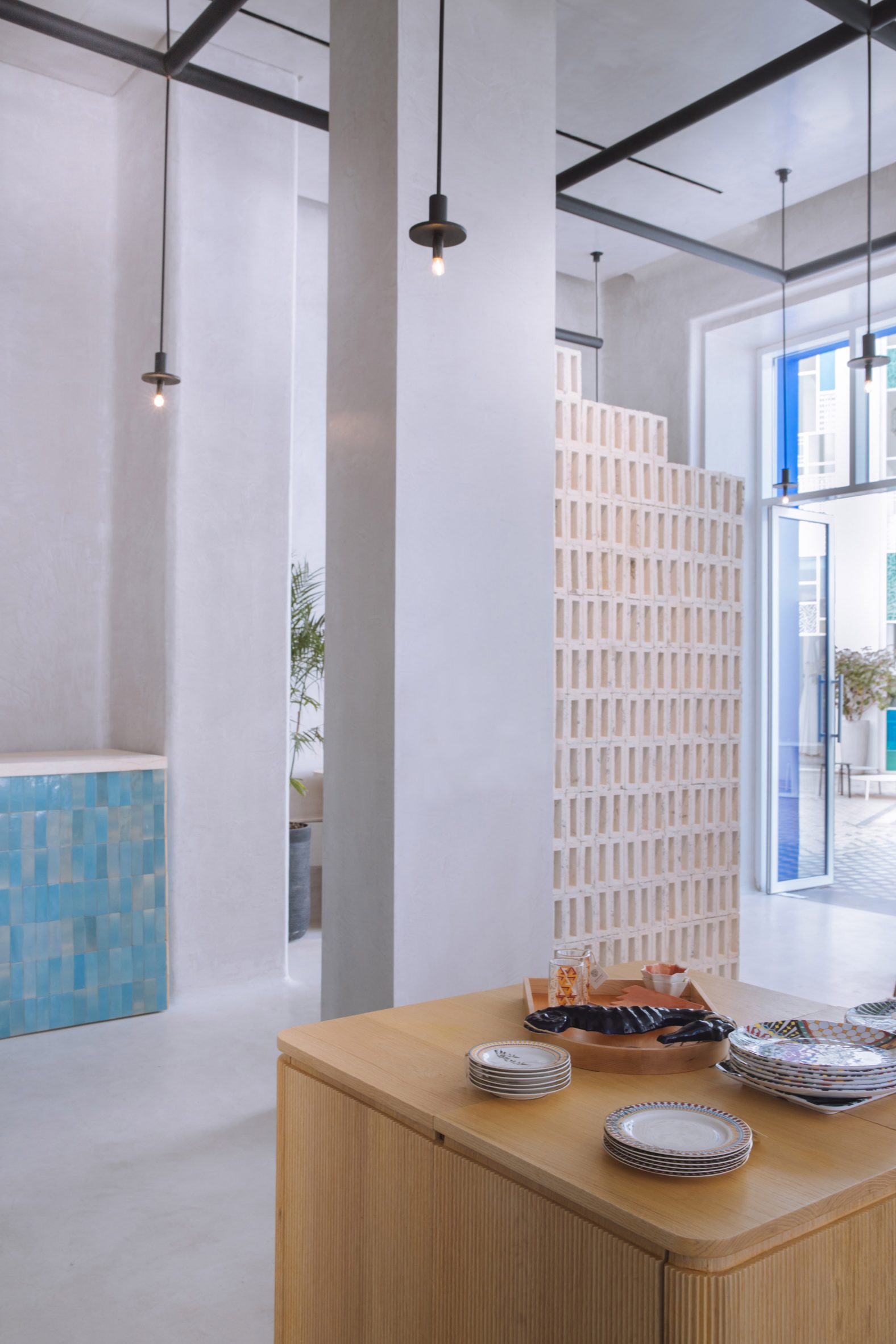
To protect the interior from the harsh south sun, the studio implemented partitions of stacked hollow rectangular bricks based on the traditional mashrabiya screens found in Islamic architecture.
These bricks are made from the shells of oysters, mussels and clams left over as waste from the coastal city’s seafood restaurants.
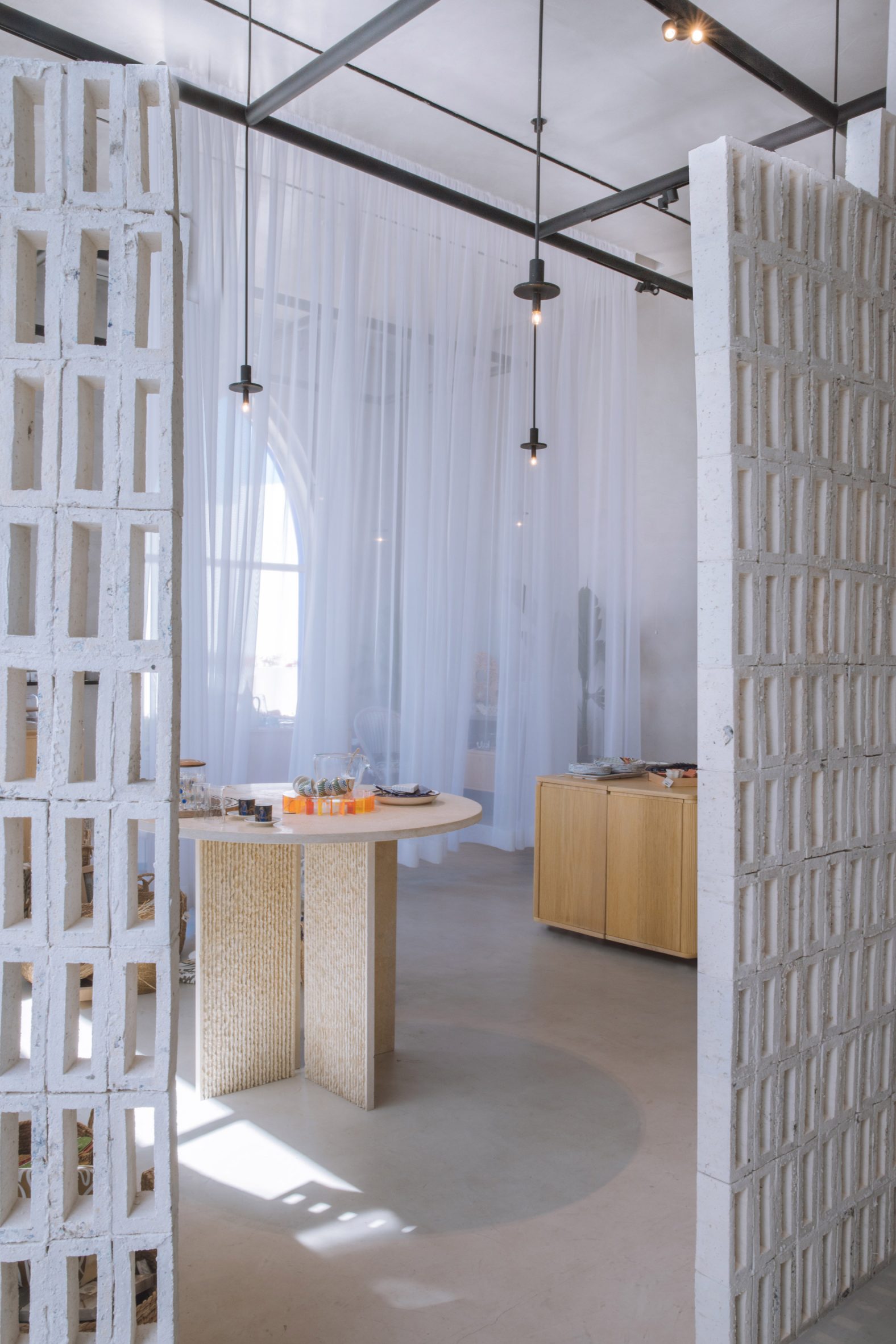
The shells were crushed and used as aggregate for a bio-based concrete that sequesters the carbon from the molluscs’ protective calcium carbonate coverings.
This material is pressed into a mould to form the brick shapes, dried to harden, and finally assembled into the gridded screens.
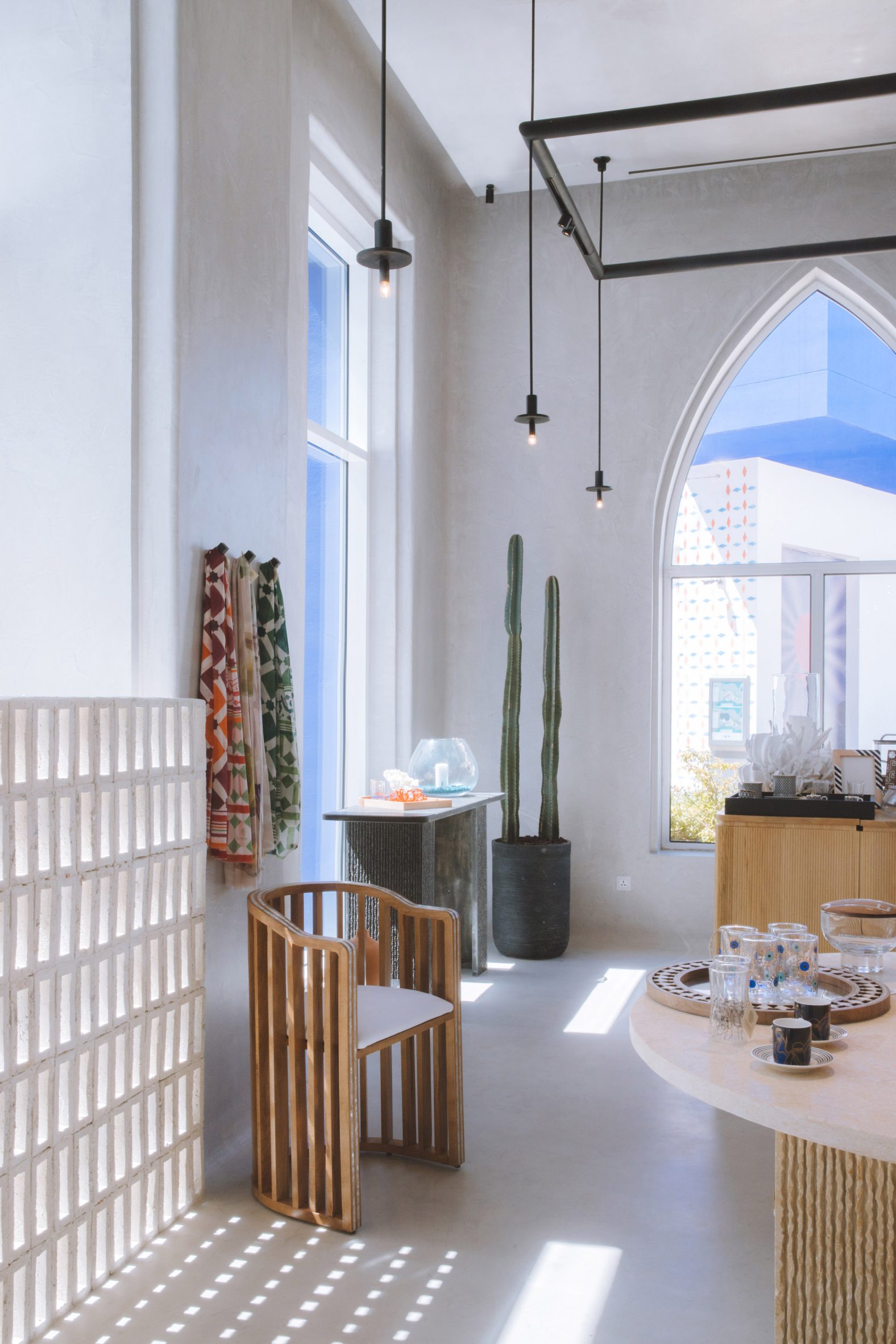
As well as shading the shop, the partitions help to divide the boutique and guide customers around the interior.
“Working alongside Decoration One’s craftspeople, a materiality-driven approach created the concept of a flexible retail store that embraces craft and low-carbon materials,” said the FADAA team, led by architect Bisher Tabbaa.
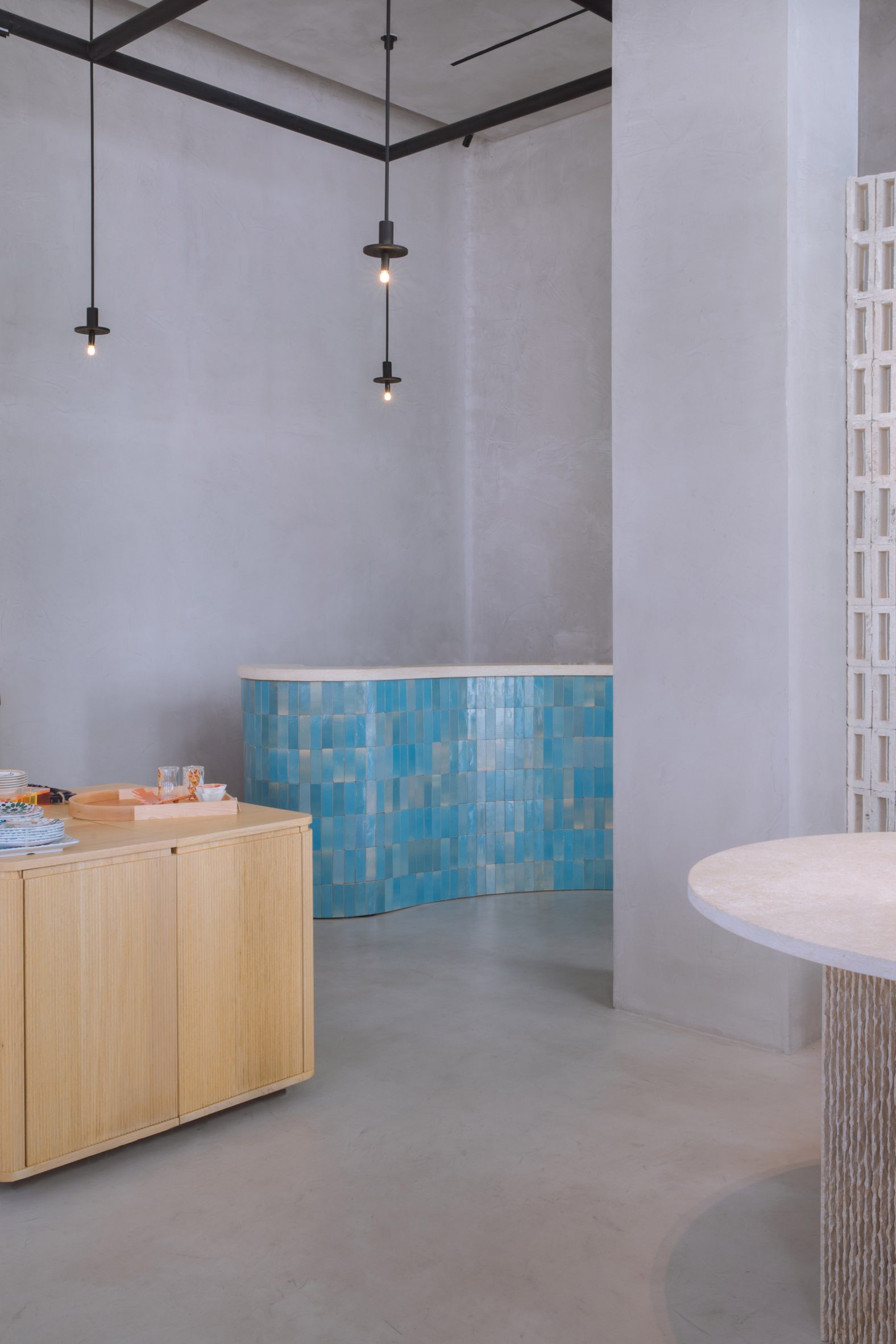
Lime-plastered walls and native plant species also feature in the store to create a “healthy indoor environment”.
To accommodate Decoration One’s ever-changing collections, modular oak tables and sheer curtains can be moved and rearranged to organise the space as desired.
More tables, made from hand-chiselled local basalt and limestone, contrast the wood furniture and offer alternative ways to display the products.
A splash of colour is introduced by the zellige ceramic tiles that clad the curved sales counter.
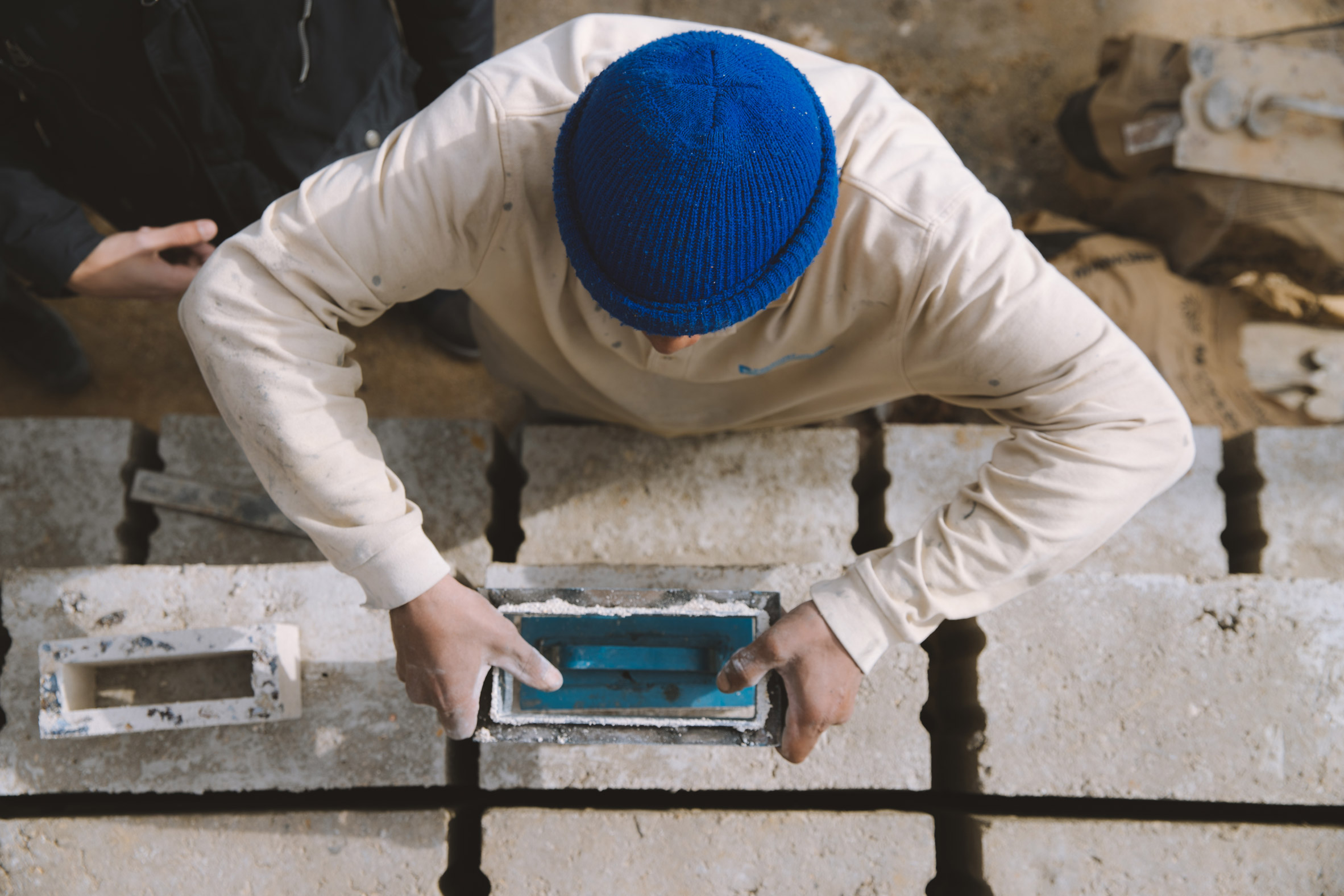
“Embracing the craft nature of the project as well as economically supporting local industries, materials such as zellige and mother of pearl inlaying were used throughout the design,” FADAA said.
D/O Aqaba is shortlisted in the Sustainable Interior category for this year’s Dezeen Awards, along with projects including a restaurant in London and an office in Tokyo.
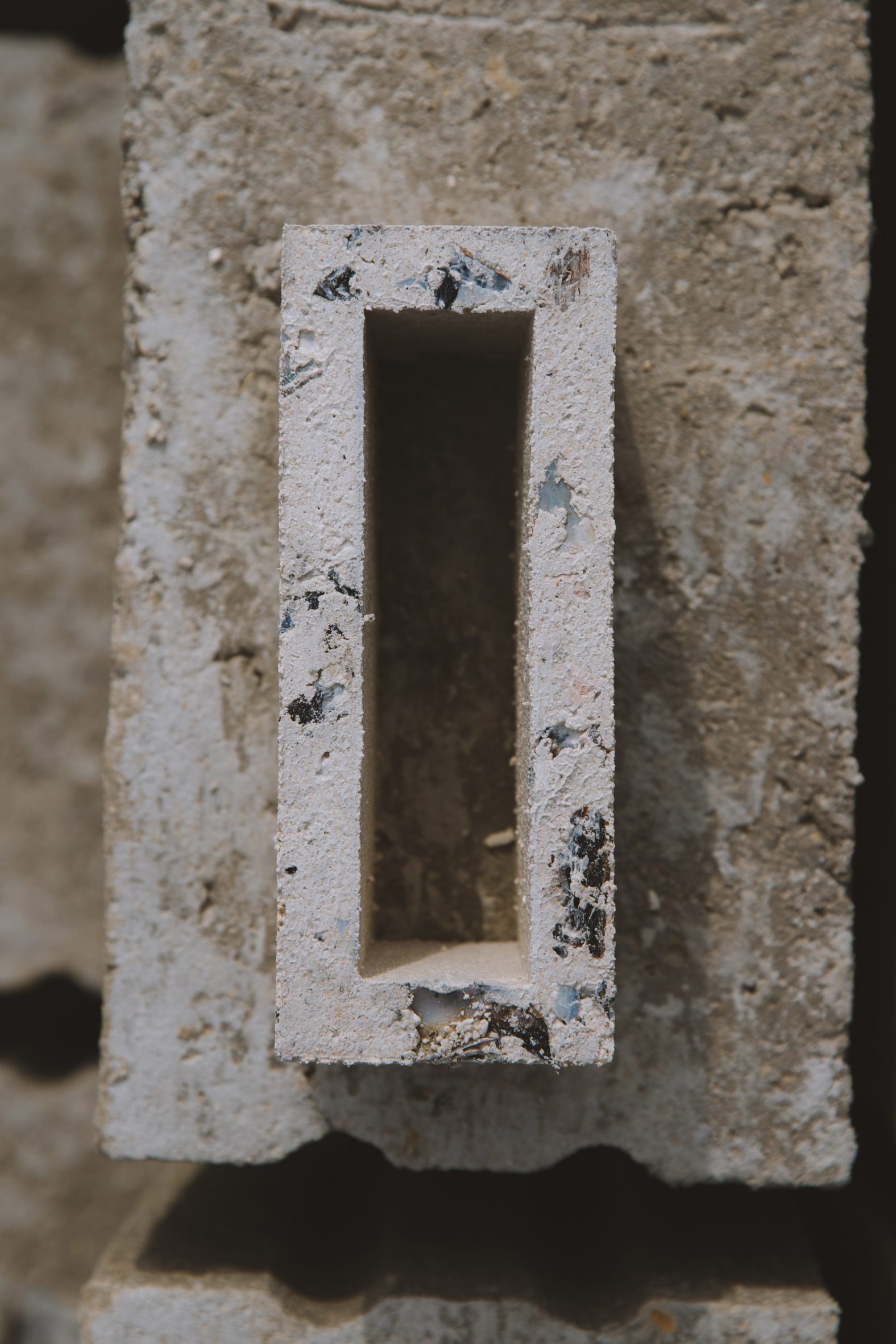
Bio-bricks are growing in popularity as a sustainable building material and a variety of compositions have been trialled over the past few years.
Bricks made from mushroom mycelium, sugar cane, charcoal and even human urine have all been put forward as environmentally friendly options.
The photography is by Bisher Tabbaa.
Project credits:
Team: Bisher Tabbaa, Sarah Hejazin, Qussai Yousef
The post FADAA uses bio-concrete screens to shade D/O Aqaba retail space appeared first on Dezeen.
[ad_2]
www.dezeen.com










